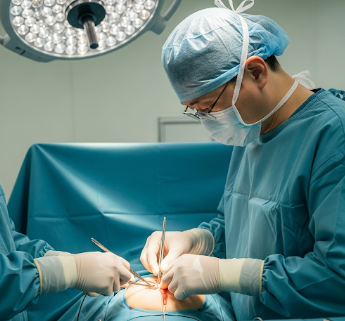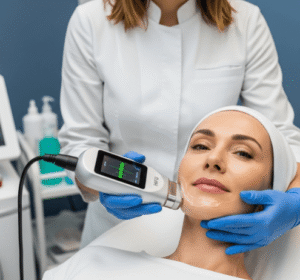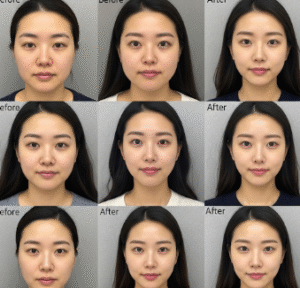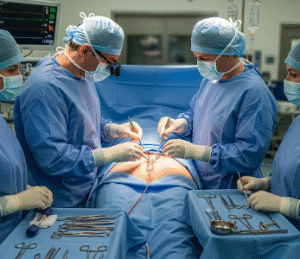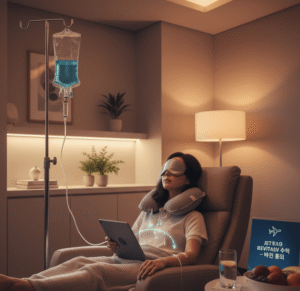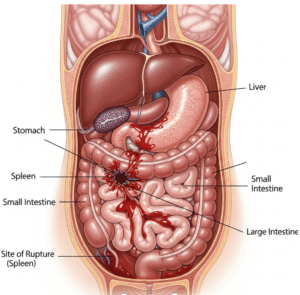Overview
Chest wall perforator flap breast reconstruction is an advanced surgical procedure used to reconstruct the breast after mastectomy or lumpectomy using the patient’s own tissue from the chest wall, without the need for implants.
In South Korea, this procedure is performed by highly skilled plastic and reconstructive surgeons using microsurgical techniques. The method offers natural-looking results, minimal donor site morbidity, and a faster recovery compared to traditional flap reconstructions. It is ideal for patients seeking autologous breast reconstruction with minimal scarring and preserved muscle function.
What is Chest Wall Perforator Flap Breast Reconstruction?
This procedure involves harvesting skin and fat supplied by perforating blood vessels from the chest wall to reconstruct the breast mound. Unlike traditional flap techniques, it preserves underlying muscles, reducing functional impairment.
Key types include:
- Thoracodorsal artery perforator (TDAP) flap – tissue harvested from the back near the armpit area.
- Lateral intercostal artery perforator (LICAP) flap – tissue from the side of the chest.
- Medial intercostal artery perforator (MICAP) flap – tissue from the inner chest wall.
This technique provides customizable breast volume and contour while maintaining muscle strength and mobility.
What are the Benefits?
Chest wall perforator flap reconstruction offers multiple advantages:
✔ Natural breast appearance and texture using the patient’s own tissue.
✔ Muscle preservation, resulting in reduced functional impairment and faster rehabilitation.
✔ Minimal donor site morbidity and less visible scarring compared to traditional flap methods.
✔ Reduced risk of implant-related complications such as infection or capsular contracture.
✔ High success rates in South Korea due to advanced microsurgical expertise.
✔ Faster return to daily activities and improved patient satisfaction.
Procedure Details
1) How should I prepare for Chest Wall Perforator Flap Breast Reconstruction?
- Comprehensive evaluation: Imaging studies, breast and chest wall assessment, and consultation with a reconstructive surgeon.
- Medical review: Blood tests, cardiac assessment, and medication adjustments.
- Smoking cessation: Essential for optimal flap survival.
- Preoperative planning: Surgeons mark the chest wall perforators using Doppler ultrasound or CT angiography.
- Arrange post-operative support: Assistance may be needed during early recovery.
Korean hospitals provide personalized preoperative counseling with detailed imaging and flap planning for optimal outcomes.
2) What happens during the procedure Chest Wall Perforator Flap Breast Reconstruction?
- Surgery is performed under general anesthesia.
- The surgeon identifies the perforator vessels supplying the chest wall tissue.
- Skin and fat are carefully harvested while preserving underlying muscles.
- The tissue is transferred to the breast site and shaped into a natural breast mound.
- Microsurgical techniques are used to connect blood vessels if necessary.
- Incisions are closed, and drains may be placed to prevent fluid accumulation.
The procedure may take 4–6 hours, depending on the complexity and number of flaps required.
3) What happens after a Chest Wall Perforator Flap Breast Reconstruction?
- Patients are monitored in the hospital for 2–5 days.
- Pain is managed with medications and regional nerve blocks.
- Compression garments or supportive bras may be used to protect the flap.
- Flap viability is regularly checked by the surgical team.
- Physical therapy may be initiated to maintain shoulder and chest mobility.
- Most patients can resume normal activities in 4–6 weeks, with full recovery by 3 months.
Korean hospitals provide structured post-operative care, including wound care, flap monitoring, and rehabilitation programs.
Risks / Benefits
Potential Risks:
- ➤ Partial or complete flap loss (rare with experienced surgeons)
- ➤ Infection or hematoma at the donor or breast site
- ➤ Seroma (fluid accumulation)
- ➤ Delayed wound healing or scarring
- ➤ Asymmetry between breasts
Major Benefits:
- ✔ Natural-looking breast reconstruction with autologous tissue
- ✔ Preserved muscle strength and reduced functional impairment
- ✔ Minimal donor site scarring
- ✔ Reduced risk of implant complications
- ✔ High success and patient satisfaction rates in South Korean microsurgical centers
Recovery and Outlook
- Immediate post-op: Flap monitoring, pain management, and gentle arm movement.
- First 2 weeks: Limited physical activity, incision care, and drain management.
- 4–6 weeks: Gradual return to normal activities; continued flap monitoring.
- 3–6 months: Full recovery, breast contour stabilization, and final aesthetic outcome.
Patients in South Korea benefit from expert microsurgical care and tailored rehabilitation programs, ensuring excellent long-term functional and cosmetic results.
When To Call the Doctor
Contact your reconstructive surgeon immediately if you experience:
- ➤ Flap color changes (pale, dark, or blue)
- ➤ Sudden swelling, redness, or warmth
- ➤ Persistent pain not relieved by medication
- ➤ Signs of infection (pus, fever)
- ➤ Unexpected changes in breast symmetry or sensation
Best Korea Option / Process
South Korea is a world-class destination for advanced breast reconstruction, offering:
- Highly skilled plastic and reconstructive surgeons with microsurgical expertise
- State-of-the-art imaging and flap planning for precise reconstruction
- Minimally invasive, muscle-sparing techniques for faster recovery
- Comprehensive post-operative rehabilitation programs
- Support for international patients, including translation, accommodation, and follow-up care
- Affordable treatment costs compared to Western countries without compromising quality
Top hospitals and clinics for chest wall perforator flap breast reconstruction in Korea:
- Samsung Medical Center
- Asan Medical Center, Seoul
- Seoul National University Hospital
- Severance Hospital (Yonsei University Health System)

